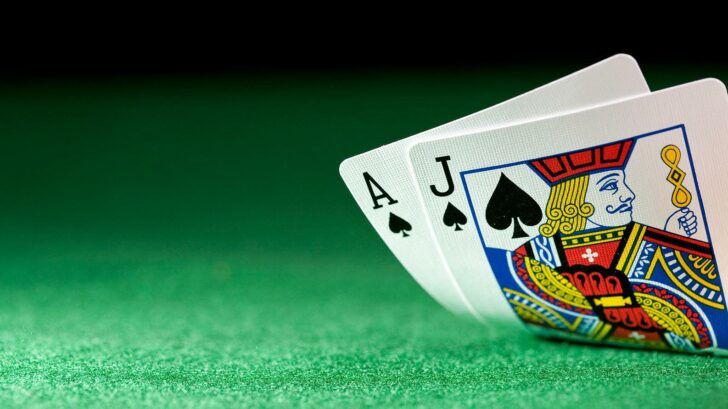Blackjack Legend Edward Thorp and the Origin of Card Counting Systems


Blackjack has a long history, but card counting systems have only existed since the 1960s. For that, we should thank Edward O. Thorp.
The classic casino game of blackjack has been around seemingly forever, being so widespread that few have stopped to wonder about its origins. Gambling historians have come to a consensus that it probably originated in France around 1700.
Known at the time as Vingt-et-Un, which roughly translates to “21,” blackjack gained popularity among French aristocrats and over the 18th and 19th centuries became a mainstay in casinos and card clubs along the Mediterranean and later in Northern Europe.
Blackjack is now the most played casino game in the US, and while most of America’s cultural imports have come from Britain, 21 originally came to the New World via French colonists. It was almost exclusively the game of bandits, barflies and frontiersman until 1931, when the state of Nevada became the first to legalize the game outright.
It instantly became a cash cow for casino magnates in Las Vegas and Reno. Players loved it but didn’t know how to manipulate the rules to their advantage. The result was endless of money flowing into the pockets of casino owners. Then, in the early 1960s, something extraordinary happened.
Edward O. Thorp hits the scene
In 1961 the New York Herald Tribune ran an article profiling a young mathematician named Edward Thorp. Employed at the Massachusetts Institute of Technology as a researcher, the 30-year old Thorp had conducted a series of experiments on mathematical probability, using blackjack as his case study.
This was at a time when the computer was a relatively new phenomenon, and many people in Western Europe and North America were astonished by the idea that a machine could turn raw numbers into complex statistical models. Here is an excerpt from the article:
The omnipresent computer…may have at last produced a palpable boon for the common run of mankind: a system for winning money in a gambling house. A 30-year-old mathematics professor named Edward O. Thorp claims to have made this historic breakthrough by feeding the equivalent of 10,000 man-years of desk-calculator computations into an IBM 704 computer and arriving at a set of discoveries about the way the odds fluctuate in the game of blackjack, or twenty-one.
What Thorp had discovered, put simply, was that the odds of winning a given hand at any given time are not random. And someone with an understanding of how these odds fluctuate could use that information to their advantage. Knowing when they were likely to win or lose, this player could then manipulate that knowledge by betting more or less.
This young mathematician had elaborated the mathematical theory behind card counting system. While Thorp wasn’t the first person to think that blackjack could be manipulated by savvy players, he was first person to build a coherent theory of probability that was explanatory and consistently predictive.
The birth of the hi-lo card counting system
Thorp developed the precursor of what is now commonly referred to as the hi-lo system. His computer model found that the fewer cards numbered 2 through 8 are in the deck, the higher the player’s chance of winning.
That is because more low cards dealt means more high cards remaining in the deck, and high cards favor the player because they mean that he has a higher chance of landing a 19 through 21, or a natural blackjack.

Thorp’s model also found that a scarcity of fives played into the player’s hands. If all four fives have been removed from the deck, the player has an edge of 3.29% over the house, roughly 52-48 odds. Thus a player skilled enough to “count” cards as they are dealt would be able to recognize when the odds are in his favor (or against him) and bet larger sums of money than he otherwise would.
Five years later Thorp published Beat the Dealer, a text destined to become one of the best blackjack card counting books ever written. Having sold close to a million copies by 2014, Thorp’s book is the bible of card counting.
A stream becomes a flood
From 1966 on more and more blackjack players became acquainted with Thorp’s theory, and card counting became a mainstay at casinos across Nevada. At that time casino staff had no idea what they were dealing with, and skilled counters could easily avoid detection while walking away from tables with thousands of dollars.
Casinos began wising up to this act during the 1970s. But while pit bosses and dealers became adept at sniffing out individual counters, a new innovation known as team play was introduced. With the task of counting and betting shared by multiple people, it was much harder for casinos to figure out who was counting and who wasn’t.
In 1978 Al Francesco’s legendary Vegas counting team was sniffed out and forced to disband. Francesco’s disciple, Ken Uston, went on to start his own team in Atlantic City but was soon run out of town there as well.
These days, advanced blackjack strategy players have a much more difficult time getting away with card counting. It takes impeccable strategy, visual recognition skills, and the art of deception. But as difficult as it is, players should tip their cap to Mr. Thorp. Without his painstaking mathematical research, its likely we never would have known a long odds from short.




